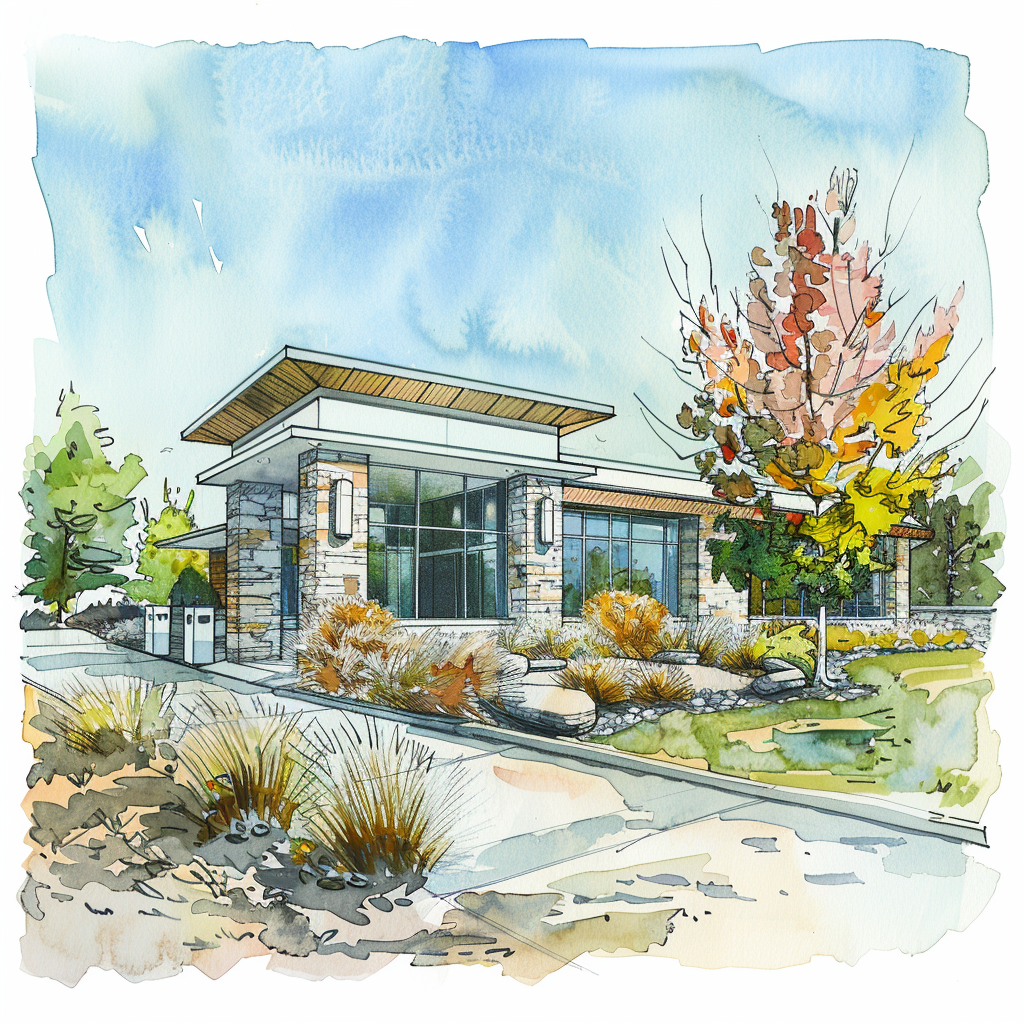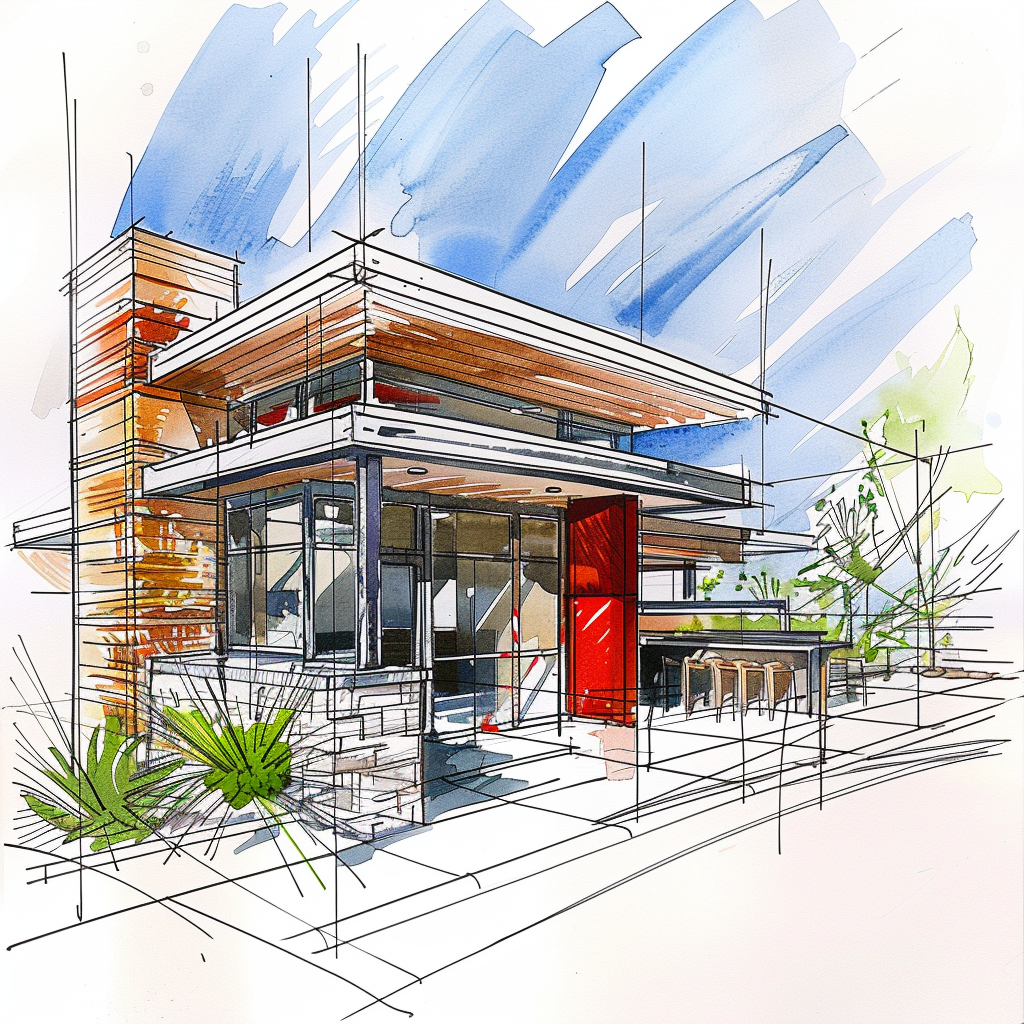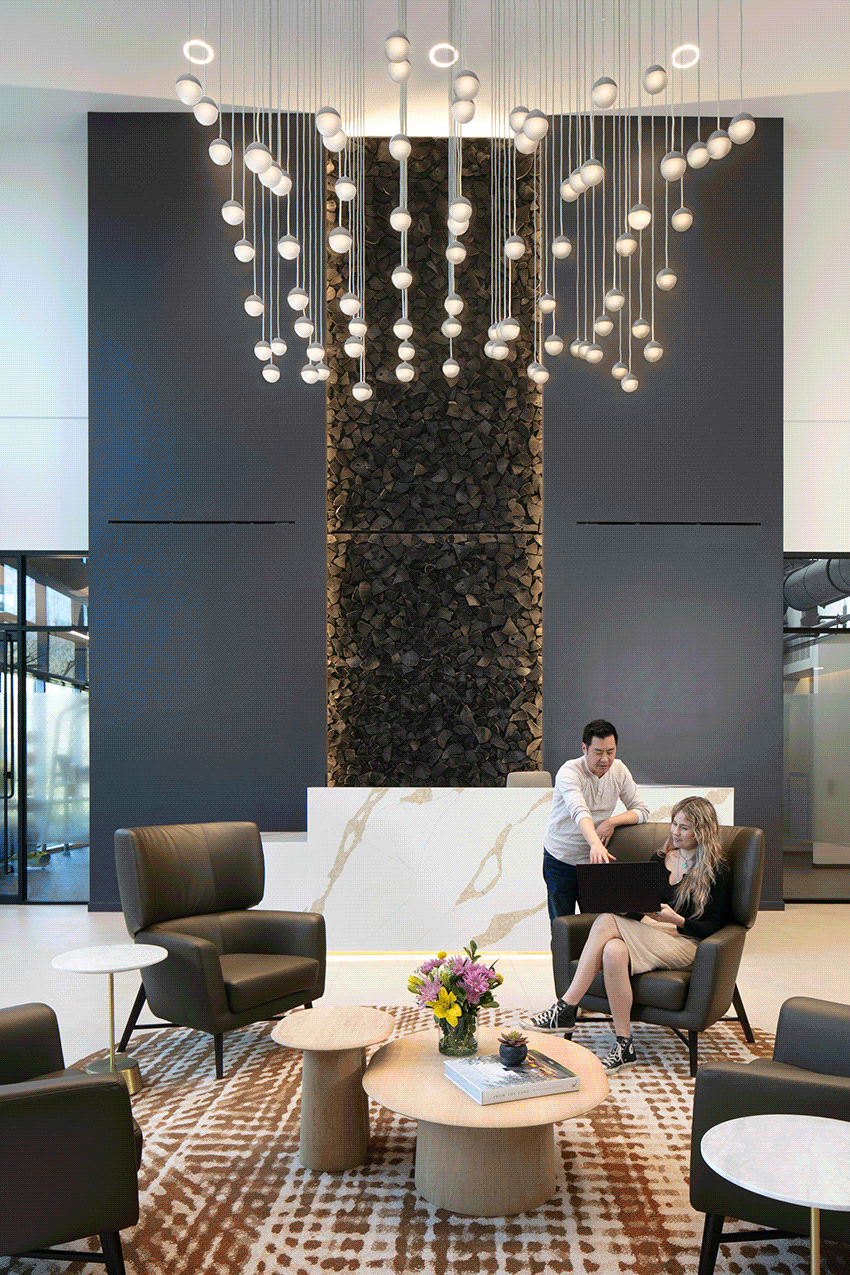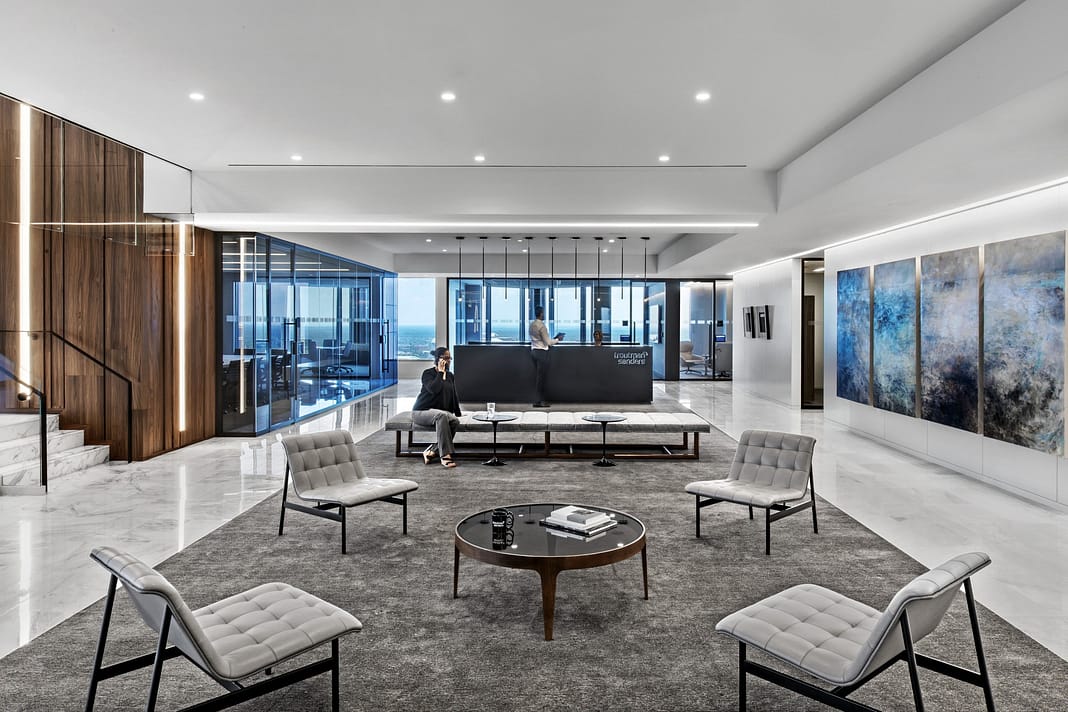
Photography © Eric Laignel.
By Russell Manthy | Principal
As law firms look at returning to the office, they face some of the same challenges as other office users but must also consider a number of difficulties unique to their industry. These differences warrant exploration, especially as they relate to reasons for returning, near-term impacts on space, longer-term impacts on space, and the need for a clear overarching strategy.
What should Law Firms prioritize when considering the return to the workplace?
(by likelihood that a response would be ranked among a respondent's top 5 choices)
- Addressing a phased re-entry into the work environment.
- Enable flexibility to work from home on a regular basis.
- Establishing enhanced and increased cleaning frequency.
- Defining social distancing protocols for the short term
- Offering a grace period for returning to the office.
WHY GO BACK TO THE OFFICE?
IA surveyed a large cross-section of our global client base about returning to the office and received over 1,700 responses in the process. By examining a wide variety of fields, we were able to pinpoint some important differences between law firms and other organizations, and consider differences in thinking and philosophy.
Not surprisingly, the number one thing that both corporate and legal clients missed about being in the office was face-to-face interaction. From that point forward, however, priorities started diverging. For example, corporate clients' number two criteria for returning to the office was improved collaboration with colleagues. Conversely, law firm respondents cited reestablishing the daily routine as a stronger reason to return. Since attorneys are some of the last professionals occupying a highly private-office-intense environment, they are more used to a quiet and distraction-free work environment. This may not be as possible in a home with family members.
When we asked about things that firms should do to make people feel comfortable coming back into the office, both corporate and legal respondents agreed that a phased reentry was at the top of the list. One of the interesting differences in responses between corporate and legal was related to their views on offering a grace period for returning to the office. Corporate respondents were generally in favor of this, but it scored relatively low among law firms. This is likely because law firms tend to be more hierarchical than other businesses, and the attorneys who return to the office may be more inclined to want to have their support teams with them.
Beyond that, there are a lot of other reasons to return to the office. Virtual collaboration cannot replace face-to-face interaction over the long term. When Yahoo and Sun Microsystems sent their workforces home, innovation declined, and the companies struggled to recover. More and more organizations are finding that their organizational culture needs live interaction to flourish. At a more tactical level, having teams in the office can make them easier and more efficient to manage.
So how do we get there?
In general, our society has reached a level of uncertainty not seen for several decades as a result of COVID-19. The legal sector is no exception, seeing an industry-wide dip in billing numbers of about 13% since July according to Clio. Recovering from this will require a significant amount of planning, especially when it comes to pivoting operations back to peak efficiency during the eventual return to the office. It will come as no surprise that clear and frequent communication around the return will be crucial to success.
Preparedness and Flexibility
Providing employees with the training and information that they need to adapt to the new environment is key to generating the right outcomes. Ultimately, our work with clients in a wide variety of industries has made it clear that the only way to succeed is by embracing a flexible plan, and setting realistic expectations since the COVID-19 landscape is constantly changing. What works on day one may not work on day ten or day thirty. Plans will need to adapt to input from the organization at all levels—the attorney perspective may be very different frpm that of the administrative staff when it comes to returning to the office.
Customization
Developing a tailored strategy is key to success in returning to the office. It is not enough to look at a checklist, check the boxes and move on. A deep dive into the culture and personality of the firm with input from many levels including the attorneys, human resources, finance and the staff at large, will make for a successful plan. A contract of trust needs to be developed between the firm and the employees. The employees of the firm have to have confidence that the plan takes into consideration all of the needs and concerns that are practical.
Change Management
This new way of using the office is a change, and once a plan is established, the next step is the development of a strong change-management program. This process should involve champions from various parts of the firm that can serve as communicators and sounding boards, as well as ongoing input from the teams they oversee.
Tactical changes
Nearly every significant historical event warrants a response from those in the fields of architecture and design. Building security was reassessed following 9/11, among countless other life-impacting aspects of that event. Today, climate change is forcing organizations like IA to reconsider how we build and where we can safely locate services and support teams. The collective reaction to the ongoing battle with coronavirus will leave an indelible mark on the office environment.
The Legal Advantage
Law firms are in some ways better poised to return to the office than those in other industries. For years, the trend in corporate design was towards open-plan workspaces and greater density. Law firms, however, have largely stuck with a more traditional model of private offices for the attorneys and larger workstations for legal assistants. Most attorney floors can be adapted to current social distancing recommendations with fairly little modification. Administrative teams, on the other hand, have been transitioning to a more dense planning scenario. This may create some logistical challenges in how those teams are brought back to the office in terms of space utilization in an environment practicing best social distancing protocols. Administrative groups may need to have more remote work flexibility as a result.
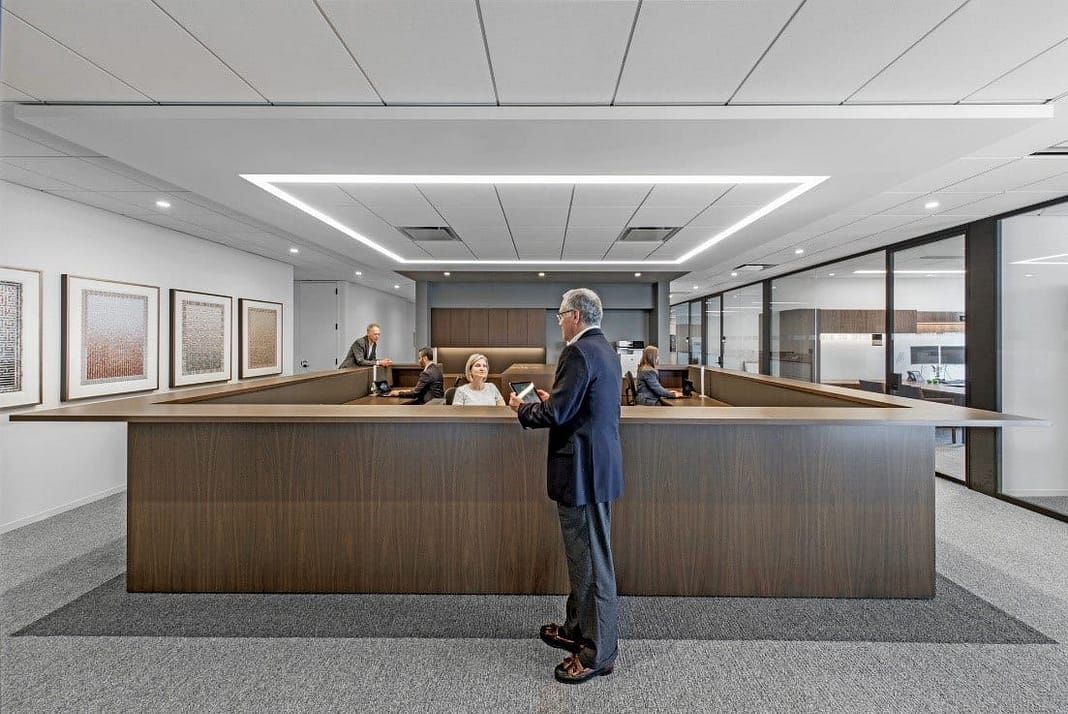
What can we learn from all of this?
While the current situation is very challenging for all organizations, some firms will have the foresight to convert these short-term responses into long-term competitive advantages. We predict that these events will lead to a greater collective focus on workplace wellbeing, which studies have already shown will lead to higher employee satisfaction rates and increased productivity. We have learned from the world’s largest unplanned social experiment that working from home can work (with the caveat that face-to-face interaction is required to nurture culture and innovation) it is not permanent so that culture is still nurtured). The option for people to move more fluidly between office and home can allow for greater flexibility in dealing with home and family matters while still maintaining reliable productivity. These are only a few of examples of how law firms could benefit from the lessons learned during this challenge. We are certain that others will emerge as we travel together down this road to our brave new world.

